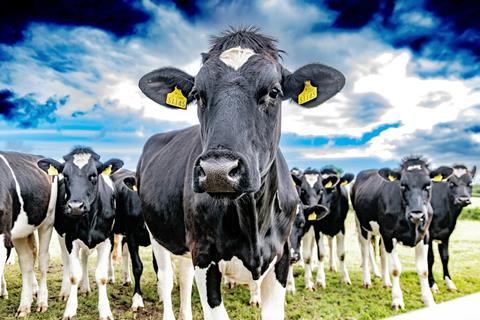
ADVERTISING: SAMANTHA DACK SAM.DACK@WRBM.COM
STATE OF THE NATION
By Megan Tatum wordsbymegantatum@gmail.com
A year ago, the UK’s dairy industry was in strong position. Suppliers seemed more confident about the future of the sector, following a series of large, strategic investments and acquisitions.
In light of this greater resilience, activity kicked up another notch this past year and more deals have followed. Take Arla Foods plan to merge with German dairy supplier DMK Group, creating Europe’s largest dairy co-operative.
Then there’s Muller’s £100m-plus acquisition of the fast-growing kefir supplier Biotiful Dairy in April. That came a month after Yeo Valley snapped up premium yoghurt brand The Collective for an undisclosed amount.
And last summer Cornish supplier Trewithen Dairy was acquired by German dairy processor Ehrmann, just a few months before Müller confirmed its acquisition of Yew Tree Dairy.
Just how significant are these deals – and what effect will they have on the dairy industry? And on the acquired brands themselves? What other notable M&A activity has dairy seen of late? How much more M&A can be expected in the year head? How will all this activity reshape supermarkets’ dairy aisles? And where does it leave suppliers and brands that have not been so involved in M&A?
What other seismic business changes can UK dairy expect in the future? How significant, for instance, is Saputo’s decision to strip back ingredient production? Or Arla’s plan to invest £90m on an upgrade for its Lockerbie plant, to create a UHT milk centre of excellence?
What impacts has tight supply of milk had on dairy companies? What can be done to increase milk production enough to satisfy suppliers’ needs?
Farm business confidence has reached historically low levels, passing record lows set last year, the NFU annual survey revealed this spring? Why? What effect on dairy could this have?
ICE CREAM CHALLENGERS
By Emma Weinbren emmaweinbrenwrites@gmail.com
Which are the UK’s regional superstars of ice cream? Which are likely to be the next Kelly’s by becoming a national name?
This feature will shine a spotlight on ice cream suppliers known and loved in their home county but still without traction nationally. It will look at players from across England, Scotland, Wales and Northern Ireland – not just the dairy heartland that is south-west England.
Which businesses are the most successful? The most eye-catching, longstanding or award-winning? What makes them such a hit? What are their ambitions? How likely are they to become Britain’s next big thing in ice cream? What lessons can they learn from Kelly’s and other ice cream brands that have become household names from humble beginnings?
HOW FUNCTIONAL CAN DAIRY GET?
By Emma Weinbren emmaweinbrenwrites@gmail.com
From milk to yoghurt, dairy is a great source calcium, protein, and vitamins like D and B12. It can also support gut health, provide antioxidants and even reduce inflammation in some instances. Milk’s isotonic, too.
Despite these numerous functional benefits coming naturally, dairy suppliers have been working to make their products even more functional. In the past year, supermarket chillers have welcomed numerous innovations promising high-protein – such as milk shakes, fruit yoghurts, ice cream and snacking cheese. There’s also been alt-milk packed with adaptogens and nootropics. And a cows milk designed to aid sleep. Last September, The Collective unveiled a seven-strong range of functional yoghurt pouches aimed at adults, including Immunity, Kickstart and Uplift variants.
So, who’s doing what in the functional dairy space – and why? What ingredients and claims are to be found across the category? What and how much appeal to shoppers does functional dairy have? Is it a fad or a sustainable market? Are any suppliers shying away from functional? And, most crucially, just how functional can dairy get?
We will highlight five functional dairy launches from the year to September 2025.
How are retailers responding to the functional dairy craze in terms of ranging, merchandising and own label launches. Which supermarkets are making the most significant moves?
How do Brits feel about functional dairy? Which types of benefits and products do they favour? And what are they less keen on?
PLANT-BASED DAIRY
By Emma Weinbren emmaweinbrenwrites@gmail.com
What’s the state of plant-based in dairy? Meat alternatives have suffered a torrid time of late. Sales have slumped as the result of high prices and concerns over ultra-processed foods. Smaller suppliers have collapsed. This year’s Veganuary was a muted affair.
In alt-dairy, the story hasn’t been so tragic, it seems. Why is that? How have the sector’s fortunes differed from those of alt-meat? And why? How are alt-dairy brands maintaining traction with shoppers through innovation and messaging? And what challenges are suppliers facing? How are they tackling them – and what does the immediate future look like for the sector?
METHANE EMMISSIONS
By Kevin White kevin.white@thegrocer.co.uk
What was last year’s Arla controversy, and how did it come about? How did it affect Arla sales? And how did other suppliers react? What does it mean for dairy’s future efforts to reduce methane emissions – which recently came under fire for not being significant enough? Will suppliers be more cautious in their efforts? Rethink them entirely? Or carry on regardless?
We will highlight four other explosive dairy controversies of years past.
How are the five biggest dairy suppliers working to cut emissions?
INTERNATIONAL TRADE
By Kevin White kevin.white@thegrocer.co.uk
What will be the impact on the dairy industry of the UK-EU trade deal?
FOCUS ON: BRITISH CHEESE
By Vince Bamford vjbamford@googlemail.com
Submissions deadline: 11 August 2025
Advertising deadline: 22 August 2025
Blue cheese is making a comeback as younger shoppers take to it and suppliers add NPD. Value sales of stilton collapsed during the pandemic but are now back in the black – thanks to soaring own label sales. Other British blues are even more buoyant; volumes have rocketed. So, what’s driven this taste for blue British cheeses? Who’s buying them? Why? How are suppliers and retailers responding in terms of innovation, ranging & merchandising and so on?
Cottage cheese is also having a moment. Why? What makes it so trendy? What other types of cheese enjoying a resurgence? What makes them so trendy? And which ones are struggling?
Who are the suppliers and retailers targeting kids? And how?
We will profile four new or newly relaunched products or ranges, ideally ones that have not appeared in The Grocer before. We need launch date, rsp, and a hi-res picture of each.
FOCUS ON: BUTTER & MARGARINE
By Vince Bamford vjbamford@googlemail.com
Submissions deadline: 19 August 2025
Advertising deadline: 22 August 2025
Butter prices in the mults rocket at the end of last year? Why? Which products were pricier – and by how much? What’s changed since? To what degree is pricing affecting sales of butter & margarine? What’s the outlook for the coming months? To what degree is the rise of posher butters driving up average prices? Are price changes in butter in line with those in other areas of dairy? What challenges are suppliers facing – and how are they tackling them?
Lactalis recently announced it has reduced the plastic in its Président Butter with Sea Salt Crystals packaging by 17%. What have other brands been up to in this area?
How are butter & spread brands working to stand out from the crowd through marketing and ads?
FOCUS ON: CONTINENTAL CHEESE
By Grace Duncan grace.duncan@thegrocer.co.uk
Submissions deadline: 8 August 2025
Advertising deadline: 22 August 2025
Counterfeiting has long been the bane of cheesemakers dealing in protected variants, such as parmigiano reggiano and halloumi. What are recent examples of the issue? Which types of cheese have been affected? And how? Has there been an impact on sales in grocery? And what are suppliers doing to counteract cheese fraud – and assure shoppers that their products are legit?
FOCUS ON: DAIRY DRINKS
By James Beeson james.beeson@thegrocer.co.uk
Submissions deadline: 4 August 2025
Advertising deadline: 22 August 2025
The dairy sector has dismissed proposals to include dairy drinks in a new extended sugar tax as “flawed” and “cockeyed”. That’s after it was revealed in May that the government was consulting on proposals to end the exemption from the Soft Drinks Industry Levy for milk-based drinks, as well as non-dairy alternatives. Changes – if there are to be any – will be implemented in October’s budget.
So, what exactly are policymakers proposing? And why? What are the dairy industry’s concerns? How would their products, profits and promotions be affected were such a change come into effect? To what degree would innovation be stymied? Which suppliers are in the most vulnerable position – and which are best braced for impact?
Best care scenario: should the government nix its plan, how will the immediate future play out for the dairy drinks sector? What are likely to be the online trends, shopper demands, retail partnerships and health crazes that inform innovation, marketing and so on?
What approach have the major mults been taking to dairy drinks, in terms of ranging & merchandising, own label innovation and promotional activity? To what degree would the sugar tax extension change their strategies?
How Alpro’s new factory in Kettering is helping reduce its carbon footprint. And how other dairy drinks makers are working to reduce their own footprints.
We will profile four new products or ranges, ideally ones that have not appeared in The Grocer before. We need launch date, rsp, and a hi-res picture of each.
FOCUS ON: ICE CREAM
By Niamh Leonard-Bedwell n.leonard-bedwell@thegrocer.co.uk
Submissions deadline: 6 August 2025
Advertising deadline: 22 August 2025
Since Little Moons went viral on TikTok in 2021, online has increasingly been the place to be for ice cream makers. There’s been plenty of examples in the past few months alone. Take Doughlicious Extra Flamin’ Hot Cookie Dough & Gelato Bites, which went on TikTok Shop in January. The following month, superstar YouTube collective The Sidemen rolled out a range of ice cream. More recently, Formula 1 driver Charles Leclerc launched a reduced-calorie ice cream brand on Gopuff.
So, who’s doing what – and why? Which platforms are the most popular? Why? Which are the ones to be avoid? What brands are proving to be the biggest online hits? And the biggest flops?
How have ice cream brands prepared for the January 2026 clampdown on HFSS ads, which will see no ads at any time online. How will the change affect their online strategies?
FOCUS ON: MILK
By Rob Brown rob_j_a_brown@hotmail.com
Submissions deadline: 12 August 2025
Advertising deadline: 22 August 2025
In yoghurt and butter, full-fat options are proving popular with shoppers as they turn to healthier fats. Milk, however, isn’t having the same experience: volumes sales of whole cows milk have fallen year on year. How come? What’s stopping ‘blue top’ from joining dairy’s full-fat trend? Can it tap the craze for fattier dairy? What are the benefits – health and otherwise – Brits actually want from milk? Which types and brands are benefiting?
Demand for organic milk is on the rise. Why? How are suppliers responding? How does higher demand affect the category’s overall price per litre What other factors are driving price increases/decreases?
Raw milk: what’s the story of its rise in the US? And could it gain popularity in the UK?
FOCUS ON: YOGHURT & POTTED DESSERTS
By Daniel Selwood daniel.selwood@thegrocer.co.uk
Submissions deadline: 8 August 2025
Advertising deadline: 22 August 2025
Yoghurt makers across dairy and alt-dairy have been rolling out lines with cleaner labels. Who are the brands cutting back on the number of ingredients and additives? And why? What are their cleaner products – and how are they being received by shoppers? What about suppliers yet to launch cleaner lines: can they be expected to do so?
What other healthier launches has the yoghurts market seen in the past year? What trends are they designed to tap? And what about potted desserts: is there any effort to cut ingredients such as sugar? How is the sector responding to shoppers’ demands?
Marketing & advertising: how have yoghurts & potted desserts been promoting themselves over the past year? What have been the most eye-catching and successful ads and activities? And the biggest flops?
Downloads
Dairymen 2025 - Plant Based Dairy 1
PDF, Size 0.1 mbDairymen 2025 - Ice Cream Superstars 1
PDF, Size 0.1 mbDairymen 2025 - Functional Dairy
PDF, Size 0.11 mbDairymen 2025 - Mergers Acquisitions 1
PDF, Size 0.12 mbDairymen 2025 - Milk
PDF, Size 0.11 mbDairymen 2025 - Focus on Yoghurts
PDF, Size 0.1 mbDairymen 2025 - Focus on Butters Spreads
PDF, Size 0.11 mbDairymen 2025 - Focus on British Cheese
PDF, Size 0.11 mbDairymen 2025 - Focus on Dairy Drinks 1
PDF, Size 0.11 mbDairymen 2025 - Focus on Continental Cheese 1
PDF, Size 0.1 mbDairymen 2025 - Focus on Ice Cream
PDF, Size 0.11 mb

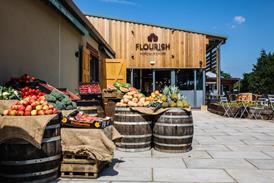

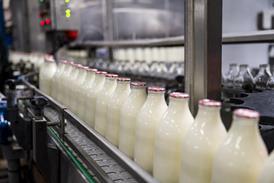
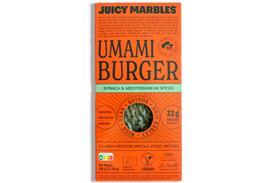
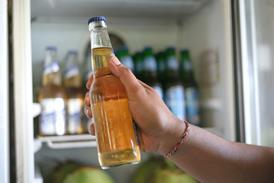



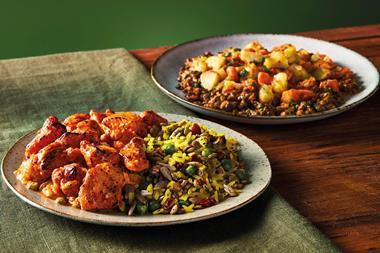

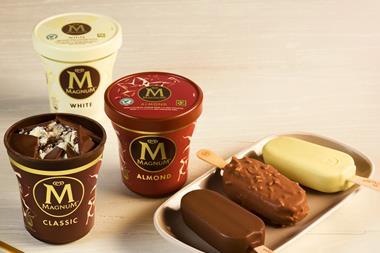
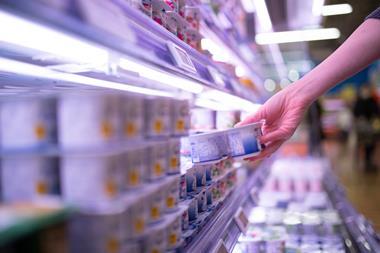


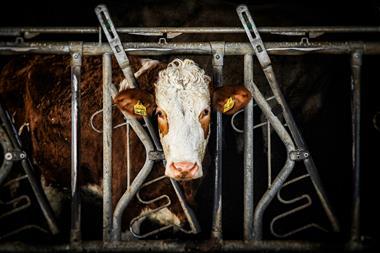



No comments yet